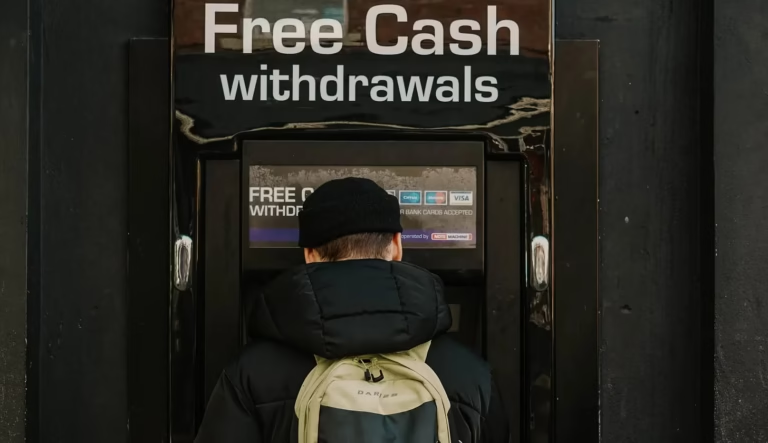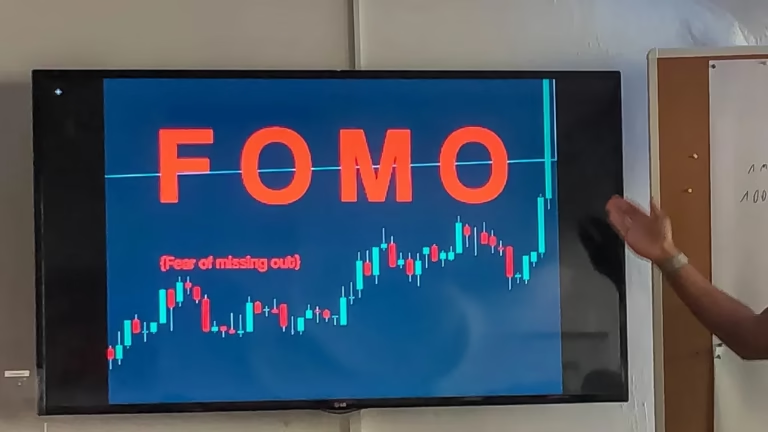Are value-assets the solution?
Lately, when we look around: At the signs at gas stations, reports about house prices and rents, and general things we need for daily life it is very obvious that there is a huge increase in prices.
At the same time, we hear about employees leaving their jobs to seek new, better opportunities while employers have a really hard time filling open positions. After decades of stagnation, they are coming to realize that they have to pay better to attract people.
Ultimately, this could be the start of a spiral that starts with increased asset values triggering higher rents (and cost of all kinds of other things) which triggers the need to earn more income which allows companies to increase prices and still find customers which again leads to higher costs and the need for higher income. That’s a bad spiral and the employees are always trying to catch up to the cost-inflation they face, even for the basic needs of life.

Part of these staggering price increases have been triggered by supply chain bottlenecks, the pandemic, and penned-up demand. Some are the manifestation of tariffs on many goods we import and that have not been removed even though the administration has changed.
In my opinion, the biggest reason for the current developments can be found in the wrong or lack of any decisions.
Let me give you a few factors that I see contributing massively to what we all experience these days:
- The value of money and wages in relation to the value of the service provided has not been adjusted or reviewed. The best indication is minimum wages. The government is basically telling everybody in America that life has not gotten more expensive since 2009. That’s when the hourly minimum was last adjusted to $7.15. If you think about it, working for that pay earns only $15,000.00 a year. Even if a couple both working full-time put their income together, they have less than $30,000.00.
- The infrastructure we are using is old and falling apart because no investments were made. Imagine you would still have to use an iPhone 4 while the rest of the world is using iPhone 11, 12, or 13?
- The system to encourage industry to do new things that benefit employees and the environment does not exist. More than $500Billion are included in US budgets if all fossil fuel subsidies and tax breaks are added together. We are all paying for old technologies while nature is showing us in ever more weird ways that the climate is changing. Nothing meaningful has been done about it.
- To restart the economy and fuel economic activities, taxes were reduced by about $8Trillion (with a T) for the time period 2017–2027. As a reaction to the pandemic and ongoing today, the FED has added another $7Trillion in new money printing. That has eroded the value of the US Dollar in buying power and created a huge debt bubble.
- With that much money in the system, the natural process of cleansing no longer occurs. Experts estimate that more than 20% of companies in the US stock exchanges are zombies that should have long disappeared. Why are they still around? They have huge debt and can’t pay the debt out of operations. Because there is so much free money floating around, they can keep borrowing new money to pay at least interest on existing debt. That way they don’t die a natural death and turn into zombies.
This is just a small list of pretty striking extremes and there is no shortage of other things that are not helping the situation and potentially increase the speed of the spiral.
One solution for individuals I work with is an approach focused on value-assets.
What Are Assets?
PWC says: Assets can be anything of value owned by individuals or organizations, and they can be categorized in different ways.
Personal assets usually include cash and cash equivalents; real estate and land; personal property such as cars, boats, and jewelry; and investments.
For organizations, assets usually help sustain production and growth, and they’re usually categorized and expressed in terms of their cash value on financial statements.
So what’s the distinction to Value Assets?
Of the things listed above you can see that some will maintain or increase their value while you hold them while others don’t.
The best example in the last few years would be real estate investment that I help people acquire to build a passive income portfolio versus things like boats or cars.
The boat and similarly a new car lose value as you use them. A house you buy to rent to a tenant increases in value. In the last 3 years, the houses we bought increased by 30% — 50% in value.
Other things categorized as value assets are gold and silver and similar rare commodities, but only when you have them physically. You want to have silver coins and gold coins and platinum coins and maybe jewelry.
Stay away from papers that promise you access to value assets. A gold ETF may or may not convert into real gold when you ask for it.
Besides precious metals and real estate, there are other assets that can be considered Value-assets but they are a little more adventurous.

First and foremost would be cryptocurrencies and here mainly bitcoin and Ethereum. Some people charge that they are not real currencies even though the first countries are integrating Bitcoin and it’s hard to say where they will go long term but they have the potential for very substantial gains, similar to gold and silver.
Then there is the category of collectibles which can include almost anything you can imagine and believe that could hold or increase its value.
Part of the reason to write this article was a trip to a local fashion store looking for clothing for my wife last weekend where I saw the dress below, a creation by Alexander McQueen that was for sale for $5,000.00 (way out of our price league). My wife and I almost immediately said:
“That looks like a piece of art.”

Will it increase in value over time — who knows.
The same would be true for paintings.
In an article published in Aug 2021 for Forbes Magazine, titled “The Emergence Of Art Collection As An Investment Against Inflation”, Nouriel Gino Yazdinian wrote:
Investing in art goes beyond just the actual purchase and also includes art authentication to protect against fraud and researching pieces to determine their market value and baseline appreciation over time. There are two camps when it comes to art collection: buying for pleasure or buying for investment. And in my opinion, there’s a viable way to combine these mindsets to reach a balance that satisfies both agendas. Across all time periods of human history, art has easily exceeded inflation, is long regarded as an investment of passion and offers potential economic benefit.
The big takeaway of this discussion about value assets is this:
As prices keep rising and inflation increasing, anything that is retaining or growing its value — i.e. value assets — will keep you on the good side of inflation.
As experts and mentors in residential real estate investing, using turnkey providers in well-performing markets I suggest that asset class for you, but the other mentioned options can work too.

Just to illustrate, here is a small example calculation
- You buy a 3 bedroom, 2 bath house in 2019 for $90,000.00 and rent it for $900/month. Your down payment was $18,000.00.
- Now, towards the end of 2021, this same house is valued @ $120,000.00 and the rent is $925/month
- You have more than doubled the value of your down payment if you were to sell the house (not recommended), but you also collected about $8,000 in cash flow to keep in your pocket in the last 30 months.
- With inflation accelerating, the next tenant will have to pay closer to $1,100/month in rent while your cost for the mortgage, insurance, etc. will not significantly increase, leading to more cash flow in your pocket.
The more the spiral turns, the faster you will see the benefits in your pockets. That gives you the choice to pay off the mortgage you initially got for the purchase or use the money to buy more of these value-assets and create a passive income portfolio that insulates you from even more crazy developments in the future.
That’s what I mean by “being on the right side of inflation”.
If you like to learn more about it, I’ll be happy to answer all your questions.




